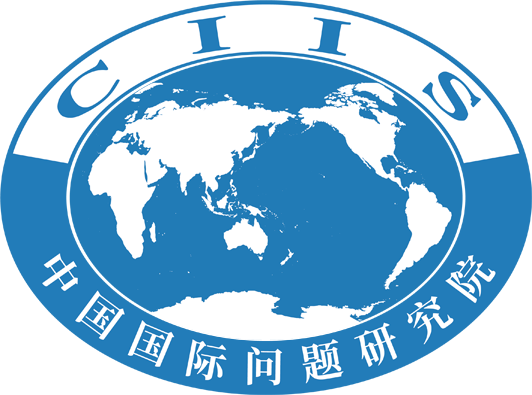The first five months of 2021 saw relative stability in the Middle East region, after the de-escalation of several local conflicts. In Syria, the Assad Government has regained 70 percent of the country's territory. Some other Arab countries, which had severed diplomatic ties with Syria after its civil war erupted, reconnected with the Assad Government to seek resumption of diplomatic relations. In Yemen, forces agreed to pursue the political resolution of conflicts through UN mediation, reaching agreements on a ceasefire, prisoner exchange and humanitarian assistance. Libya's interim government was formed with the Government of National Unity and the Libyan National Army agreeing to hold national elections at the end of this year.
The relative peace in the Middle East was disturbed in May, however, with a renewed escalation of tensions between Israel and Palestine. Sparked by settlement disputes in East Jerusalem, military conflict on a scale unseen in recent years caused hundreds of deaths and thousands of injuries in the weeks that followed. International mediation and pressure led the two countries to reach a ceasefire agreement, but sporadic demonstrations and conflicts continued, and the root cause of the conflict remains unresolved.
Meanwhile, Iran's nuclear negotiations continue slogging forward. While the related parties have reached a preliminary compromise, there is still intense debate on key issues such as the right to uranium enrichment and the lifting of sanctions.
The U.S. hopes that the re-signing of the nuclear deal will push Iran toward more complete abandonment of its nuclear program and to exercise restraint in its regional activities. However, those objectives were flatly rejected by Iran, which holds the view that it is the U.S. that has breached the agreement, and that it is the U.S. that should take the lead to fulfill its obligations under the treaty by lifting all sanctions against Iran.
The U.S. currently faces multiple domestic challenges, posed both by COVID-19 and economic issues, and in the international arena, it continues to focus mainly on major-country competition, leaving little energy to spare on the Middle East region. The Iranian Government is also under immense pressure to improve its people's living standards which are made worse due to U.S. sanctions. It can therefore be said that both countries have a real and urgent need to resume the nuclear deal. However, no matter which of the countries takes the critical first step, the move will be perceived domestically as weakness, deterring both sides from taking the lead. This continuing stalemate causes the international community to miss one good opportunity after another as it strives to maintain the nuclear non-proliferation system in the Middle East and to ease regional conflict.
Two crucial elections
This March, Israel held its fourth parliamentary election in two years. After arduous negotiations, opposition leader Yair Lapid successfully formed a coalition government, putting an end to Prime Minister Benjamin Netanyahu's rule. Lapid drew together eight diverse political parties in order to form his coalition. The coalition spans the far-left to far-right of Israeli society and, for the first time, also includes a small faction representing Israel's Arab minority. The diversity of the parties could see the coalition represent the interests of a broader cross-section of Israeli society, however the potential for internal discord cannot be underestimated as the eight parties have very little common ground.
To strengthen the solidarity of the coalition, a rotational leadership arrangement was signed between coalition members. Naftali Bennet, leader of coalition member Yamina, itself an alliance of multiple right-wing parties, is the first coalition leader under the agreement. Bennet replaced Netanyahu as Israel's prime minister, with Lapid serving as deputy prime minister and foreign minister. According to the agreement, they will switch positions in two years.
That Lapid's party, Yesh Atid, is a left-wing party and Yamina is staunchly right-wing may lead to some swinging back and forth in Israel's policy direction going forward. Currently, the new government has upheld and strengthened the position of the previous government on Israel-Palestine relations. It has also adopted a more hardline foreign policy on regional affairs, and fully consolidated its communication and coordination with the U.S. Generally speaking, a more right-leaning Israeli Government has begun to slowly emerge.
Less than a week after the new Israeli Government officially took office, the results of the Iranian presidential election were announced, with the conservative Chief Justice Ebrahim Raisi elected as president. With the trust of Iran's head of state, the supreme leader Ali Khamenei, his strong political experience and his credentials as an Islamic cleric, Raisi is highly expected to be Iran's next supreme leader.
The priority for Raisi's administration is to have the U.S. lift its sanctions, to boost the domestic economy and to improve relations with neighboring countries. But none of these is easy. Although the hardliner Raisi always maintains a tough tongue toward the U.S., he also understands that bringing the U.S. back to the nuclear deal and urging it to lift sanctions are both of vital importance to the long-term interests of Iran. If the U.S. were to lift the illegal sanctions and fulfill its duty under the nuclear deal, its ties with Iran could at least maintain a status of "cold peace."
Meanwhile, Raisi also needs to find a way to coexist with Israel's new right-wing government, which will be a challenge for both countries. Considering the two countries' zero-sum philosophy and confrontational policy, rational restraint, management of differences, and effective response to possible emergencies are important to safeguard the interests of both parties and to safeguard regional peace. At present, the new administrations of both countries are still getting a feel for one another, and all related parties should make good use of this window of time to demonstrate goodwill and contribute to regional stability.
Stability and development
This year marks the 30th anniversary of the end of the Gulf War, the 20th anniversary of the War in Afghanistan, and the 10th anniversary of the Arab Spring movement. Looking back over the past half-century, wars and conflicts have persisted in the Middle East. Geopolitical games and wrestling between great powers have shattered the political landscape of the Middle East, with traditional security risks intertwining with non-traditional ones.
Most recently, relations between countries in the region are improving. Some Arab countries have established ties with Israel, tensions between Iran and its neighboring countries have been eased, and relations have improved between Qatar and member states of the Gulf Cooperation Council. Such upward momentum is shaping a sound environment for regional peace and stability, and is laying a foundation for countries to focus on development.
Experience from history shows that resolving regional security issues only through military force is not the best choice and cannot offer fundamental resolutions. Development deficit is an important reason behind the continuous political turmoil and extremism in the Middle East and, for this reason, an important way to uproot the causes of security challenges in the region is to improve its level of development and enhance the quality of its governance. Currently the Middle East has reached a window period for development. Countries should seek this opportunity to achieve inclusive growth in poverty alleviation, infrastructure building, education, healthcare and other areas.
The author is Li Zixin, an assistant research fellow at China Institute of International Studies
Source: Beijing Review, NO.29 JULY 22, 2021



